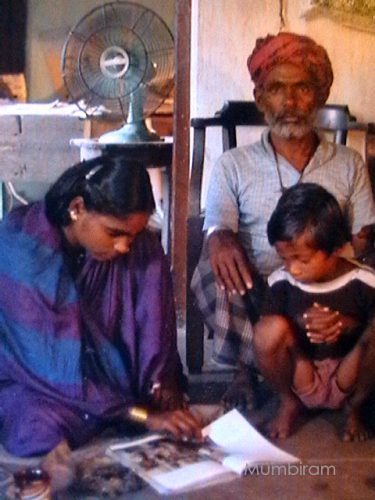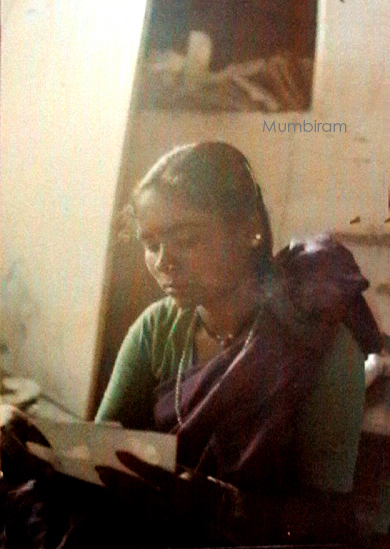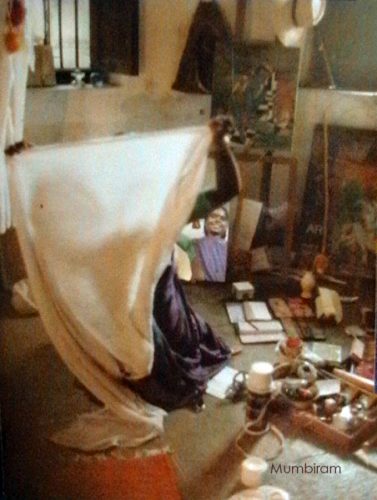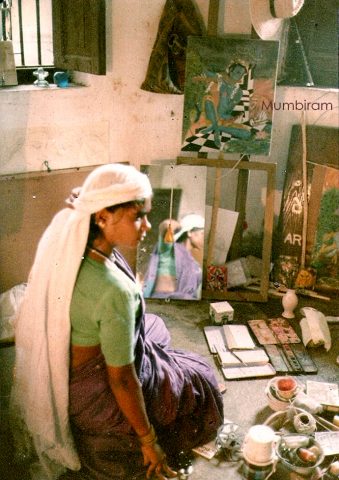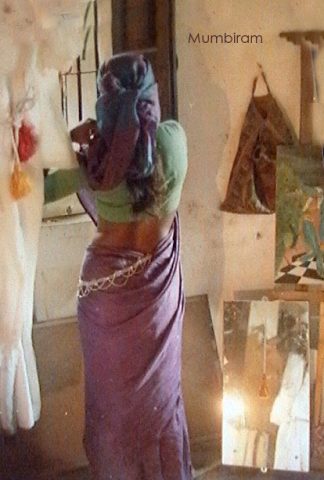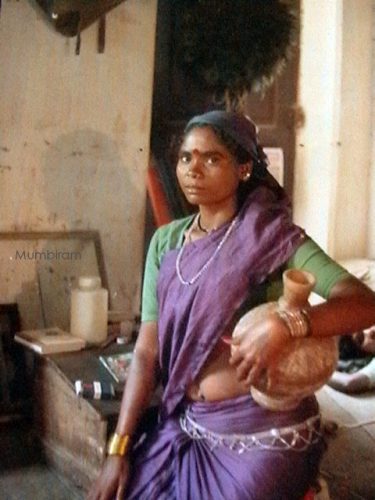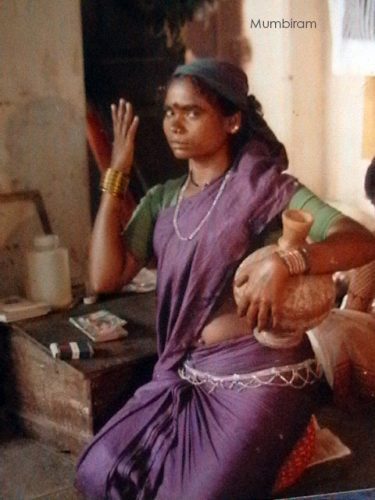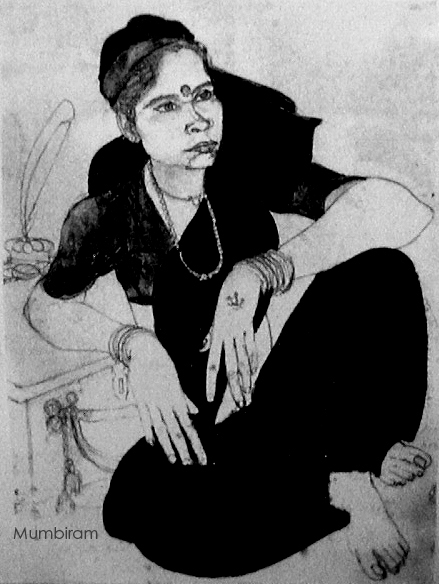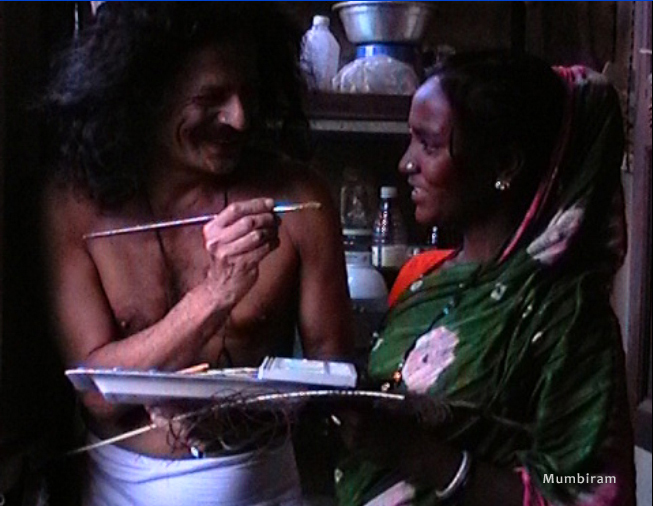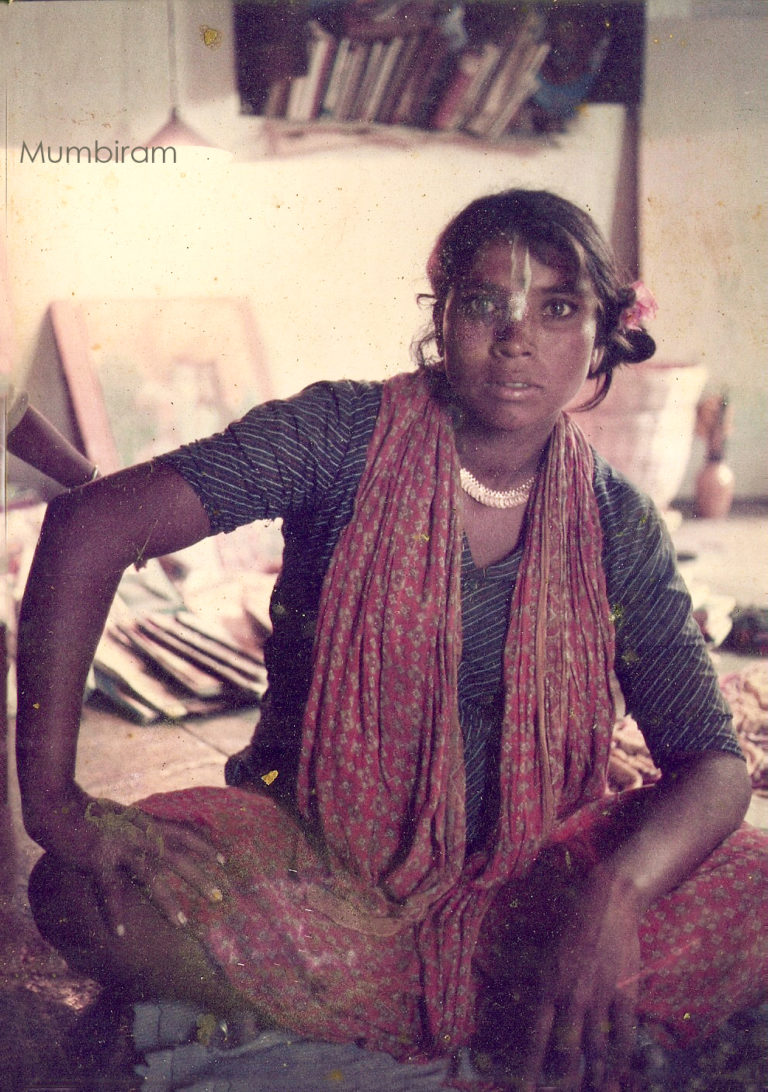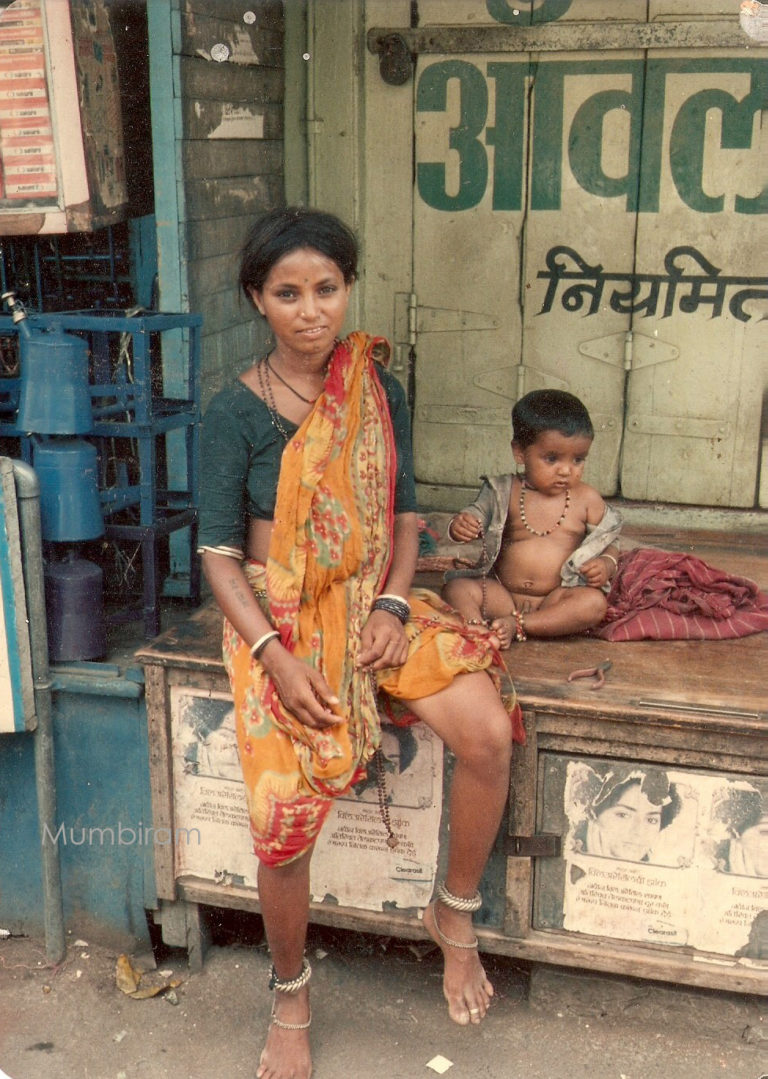Soon after Navrang’s visits on two consecutive days, ex-village chief Ajmedar came with his daughter named Khutke and a little boy named Chidi, meaning “sparrow”. We don’t know what Khutke means, but after having seen Khutke, we think the sounds fit her personality. Many Phasepardhi names are chosen just for how they sound anyway. That first visit with Ajmedar was more or less for introduction. Next day, Khutke came with a teenaged boy named Sharad, who would later marry Navrang’s attractive if wilful little sister Shani.
In that small community of Phase Phardhis that made Asol Dara their home, there certainly was a wide variety of individuals, in body and mind. Navrang was fair and green-eyed, but Khutke was dark and curly-haired. Navrang was sensitive and gentle. Khutke was strong-willed, confident if abrasive. Both had their own very different but definite sense of dressing. Khutke was wearing a purple sari without any border, and a well fitting green blouse. She was younger than Navrang, and wore her sari right down to her ankles, not drawn up to the knees. The new generation is more and more influenced by the culture presented by bollywood movies. Mumbiram has no hangups about using the camera alongside his classical paper-paint-and-brush equipment.
